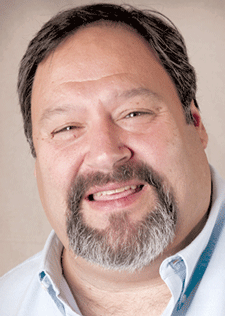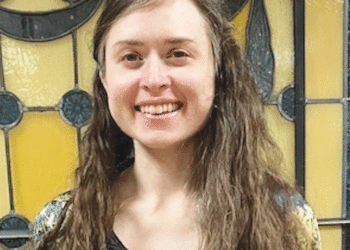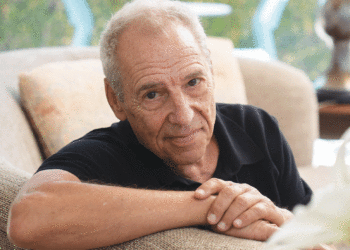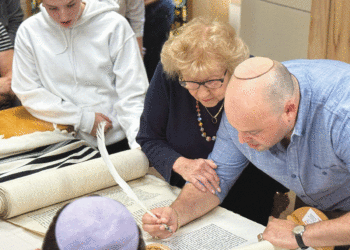Federation’s EDGE program organizes local participation in the Jewish Lens, which marries photography with Jewish values and texts
By ERIN ELLIOTT BRYAN / Community News Editor
In a quotation posted on the Web site for the Jewish Lens program, 15-year-old Max Wasserman, of the Gann Academy in Massachusetts, says that “the next generation [of Jews] will make new traditions and the old ones will get forgotten unless we preserve them.”
And that’s exactly what the Jewish Lens program intends to help students do. According to its Web site, the program “provides the next generation of Jews with an entry point to Jewish learning, skills development and an opportunity to share their voice — their lens — with others.”
Since its launch in 2006, the Jewish Lens’ curriculum has been used in more than 200 Jewish schools or communal organizations in the United States, Israel, Canada and Australia.
Currently, the curriculum is being implemented in both Minneapolis and St. Paul through a pilot program with EDGE (Enrichment, Development and Growth for Educators), a program of the Minneapolis Jewish Federation, which was funded by a grant from the New York-based Covenant Foundation.
“It’s a curriculum based on the work of a photographer named Zion Ozeri,” said EDGE Director Hugh Kirsch. “What it basically does is that it first of all teaches kids how to look at photography and photographs with a critical eye… But what is really neat, and what separates this from any other basic photography curriculum, is that then that knowledge is used by the kids to take their own photographs, and interpret and develop their own ideas on Jewish values and texts.”
 Hugh Kirsch
Hugh Kirsch
Ozeri, the founder and artistic director of the Jewish Lens, has been focused on photographing the diversity of Jewish communities throughout the world for the past 20 years. In developing the initial idea for the Jewish Lens, he realized that photography could make Jewish learning more relevant for students.
“The more I looked at it, the more I realized that our education is really text-based, intellectual exercise. And many times, especially at a certain age, it doesn’t always speak to our students,” Ozeri told the AJW. “I started realizing more and more the power of photography in education… It’s not only an intellectual exercise, but also, to some extent, an emotional exercise.”
Ozeri said photography allows teaching to be more experience-based and empowering for the students — especially in this digital age of communication.
“Everyone nowadays has either a smartphone or a cell phone or whatever. We’re all taking photographs and transmitting them in [a split second] to friends, family and sometimes around the world,” Ozeri said. “The students are already there, so why not use this tool that has emotional as well as intellectual impacts to teach, for education?”
According to information provided by the Jewish Lens, the curriculum provides lesson plans and activities that guide the students’ natural inclination to communicate through photography, which allows them to examine Jewish values, tradition and content, and their relationship to it. The exploration also challenges youth to inquire about what it means to share a common heritage and culture that has diverse expressions within the community and throughout the world.
Kirsch was initially drawn to the artistic aspect of the Jewish Lens. He first proposed the program to local schools, synagogues and organizations shortly after he began his position at EDGE in October 2010 and was “really jazzed” to get involved.
Kirsch organized local training sessions that were led by the program’s former executive director, Rabbi Leor Sinai (who has since made aliya); current executive director, Alisha Goodman; and education director, Karen Jarmon.
Kirsch said the program personalizes the Jewish tradition for kids and can supplement what is learned in Sunday School or Hebrew School.
“You’re taking the 5,000- or whatever-year-old texts and values, and molding them in with photography and modern day [techniques],” Kirsch said. “In my mind, it’s using the arts to their fullest, in terms of learning and internalizing that learning.”
Schools and synagogues that participate in the program receive copies of the curriculum and can implement anywhere between four and 30 lessons throughout the school year. At the end of the school year, all participating sites help to organize a community-wide initiative that features the students’ work and presents a “visual interpretation of what ‘being Jewish’ means to the next generation.”
“This program is built on the idea of community,” Kirsch said. “It doesn’t matter if you’re Reform, Conservative or Orthodox, it doesn’t matter if you’re in this location, this location or this location, everybody works together on this community-wide initiative.”
The St. Paul JCC was the first local organization to use the curriculum when it offered it as an elective course this past summer at Camp Butwin. The schools and synagogues participating in this pilot program are the Amos and Celia Heilicher Minneapolis Jewish Day School, the Talmud Torah of Minneapolis, the Talmud Torah of St. Paul, Bet Shalom Congregation, Beth Jacob Congregation, Mount Zion Temple and Temple of Aaron.
Rabbi Lynn Liberman, Beth Jacob’s director of congregational learning, said the synagogue was attracted to the program’s focus on community building. Along those lines, a significant number of Beth Jacob’s students participate in the Jewish Lens program through the Talmud Torah of St. Paul. She is also working on developing an intergenerational project for the entire congregation early next year, in conjunction with the program.
“I, on behalf of the shul, and the shul itself really take very seriously being community players and saw this as a great opportunity to share in yet another way of pursuing Jewish learning,” Liberman said. “This particular program was made available and it’s just unique. It’s a unique way to bring people into learning — to learn more about who they are as Jews, who they are as part of the Jewish community and how that experience plays out in their lives.”
Kirsch agreed that the program is a new and unique way to approach Jewish education.
“When I look at photography, it’s one of the most real forms of communication,” Kirsch said. “To combine Jewish texts and values with that visual is just really cool.”
***
For information on EDGE, contact Hugh Kirsch at 952-417-2327 or: hkirsch@mplsfed.org, or visit: www.edgemn.org. For information about the Jewish Lens program, visit: www.jewishlens.org.
(American Jewish World, 11.11.11)









 Hugh Kirsch
Hugh Kirsch











Comments 0